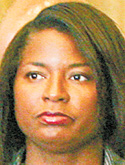Council starts to look at ward redistricting


Tarpley
YOUNGSTOWN
An initial meeting of city council about redistricting Youngstown’s seven wards didn’t answer too many questions.
But members plan to meet again to iron out the specifics even though they haven’t scheduled another meeting.
The only question definitely answered Monday was that the legislative body would meet in the future as council as a whole with council President Jamael Tito Brown running the meeting.
Monday’s meeting was a council Community Development Agency Committee meeting called by its chairwoman, Janet Tarpley, D-6th.
Tarpley said she called the meeting because no one else had done so after voters approved a charter amendment more than seven months ago, and because city CDA Director Bill D’Avignon had proposed redistricting maps.
The council members looked at the maps that balance the population of the seven wards, one by existing voting precincts and the other by census blocks. Both were prepared by the Youngstown State University’s Center for Urban and Regional Studies.
None of the council members embraced the maps, though the one based on voting precincts drew more attention.
But even that one likely would be redrawn as it would put Councilman Mike Ray, D-4th, in the 3rd Ward, represented by Democrat Nate Pinkard.
Both incumbents can run for re-election in 2015.
“These are just examples,” D’Avignon said of the proposed maps.
The population in each of the seven wards now ranges from 7,227 in the South Side’s 6th Ward to 12,130 in the West Side’s 4th Ward, according to the 2010 census.
Some council members say the huge population differences violate federal one-man, one-vote court rulings.
The voting precincts maps would have the populations range from 9,385 in the 5th Ward on the southwest side of the city to 9,884 on the upper West Side’s 4th Ward.
However, it makes significant changes to the North Side’s 3rd Ward and the 7th Ward on the southeast side.
The 3rd would expand west into an industrial area of the 4th Ward, and the 7th would reach so far north that it would go into areas currently in the East Side’s 2nd Ward.
The 2nd Ward, already the biggest in size but sixth of seven in terms of population, would become even larger, taking northeast portions of the 1st and 3rd Wards.
Some council members expressed concern that such a map wouldn’t follow the city charter’s provision that the wards be “bounded by natural boundaries or street lines.”
Before voters overwhelmingly approved a city-charter amendment in the November 2012 election, the document read: “Following each federal census, council may redistrict the city so as to maintain a reasonable equality of population among the seven wards.”
A charter-review committee, with members selected by Mayor Charles Sammarone and those who serve on council, recommended changing the word “may” to “must” or “shall.” The boundary lines of the wards haven’t been changed since shortly after the 1980 census.
Council changed the language to say redistricting “shall” be done after there’s been a “reasonable population change.” Council members never defined “reasonable population change,” but most said last year that the redistricting would happen in 2013.
Some council members want the redistricting done quickly, while others said Monday it could take up to a year as long as the new lines are ready for council’s next election in 2015.
Any changes to ward boundaries would have to comply with federal standards for minority representation, Tarpley said.
The next meeting hasn’t been scheduled, but council members said they want officials form YSU’s Center for Urban and Regional Studies there.
Council could decide to either hire the center or another outside agency to draw redistricting maps.
 43
43
